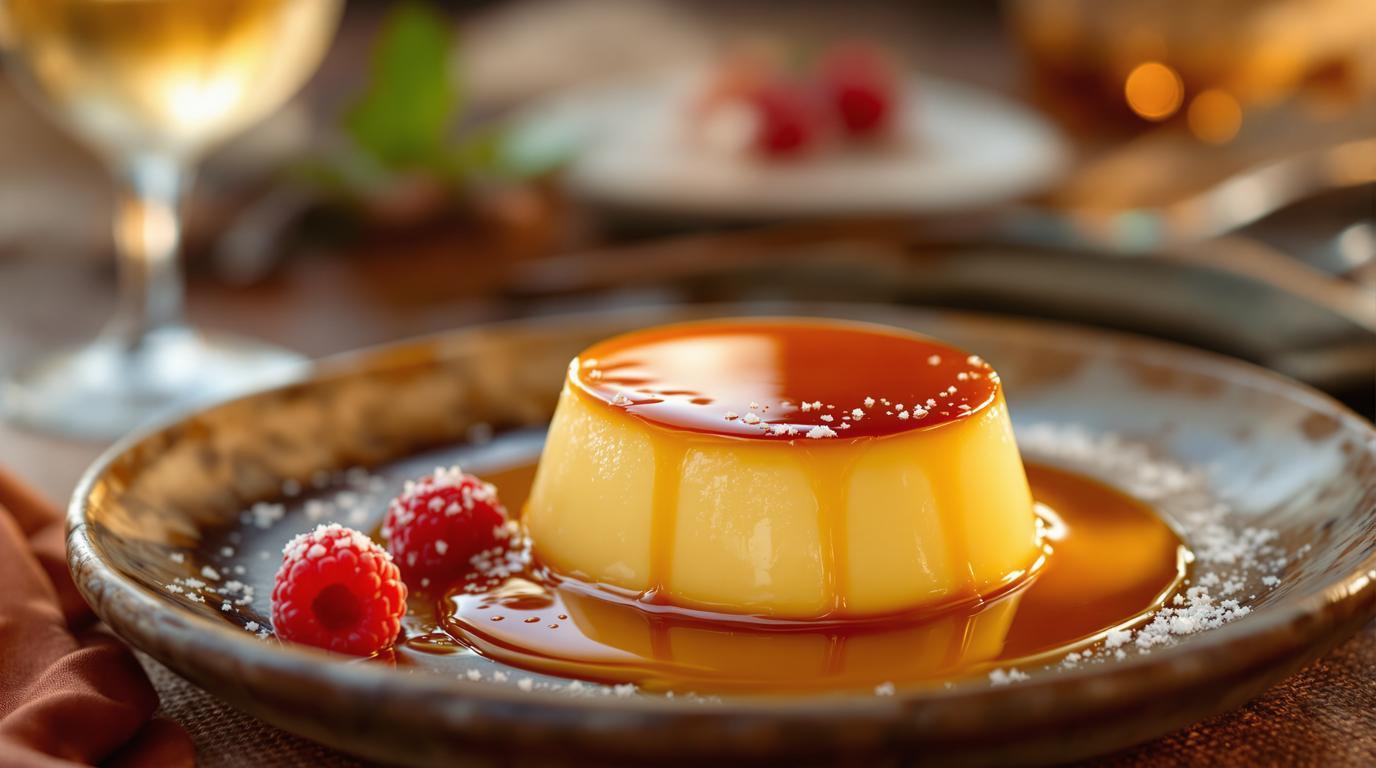The moment I first tasted an authentic Flan Napolitano in a small kitchen tucked away in Mexico City’s historic center, I knew I’d discovered something transformative. The silky-smooth custard yielded to my spoon like velvet, while the dark amber caramel created a bittersweet symphony that danced across my palate. What struck me most wasn’t just the perfect texture, but how this seemingly simple dessert carried layers of flavor complexity that commercial versions never capture. The secret? A technique passed through generations that balances eggs, dairy, and heat with remarkable precision.
The Story
Flan Napolitano sits at the fascinating intersection of Spanish technique and Latin American innovation. While traveling through Mexico, I learned that what distinguishes this version from its European cousins is the careful balance of richness and delicacy. Unlike the Spanish original that relies solely on milk, this adaptation introduces a secret that transforms the custard completely: the perfect harmony between whole milk and egg yolks, with that subtle hint of bitter almond that few recipes include.
Ingredients Spotlight
For 6-8 servings:
- 500g (2 cups) whole milk or half & half
- 4 large eggs + 2 egg yolks
- 100g (½ cup) granulated sugar + 3 tbsp for caramel
- 1 tsp vanilla extract
- ¼ tsp almond extract (the modern substitute for traditional bitter almond)
- Pinch of salt
The ratio of eggs to dairy is absolutely crucial here. The additional yolks provide that distinctive silkiness that separates a good flan from a transcendent one. And while many recipes ignore it, that touch of almond extract creates a subtle complexity that elevates the entire dessert without announcing itself.
Step-by-Step Guide
1. Prepare the caramel: Warm your ramekins by rinsing with hot water (this prevents thermal shock). In a stainless-steel pan, heat 3 tbsp sugar over medium heat without stirring until it melts into a deep amber color (about 4-5 minutes). Immediately pour into warmed ramekins, swirling to coat the bottoms evenly.
2. Create the custard base: Preheat oven to 325°F (160°C). In a bowl, whisk eggs, egg yolks, and sugar until just combined—don’t overbeat! Heat milk to a gentle simmer with salt and vanilla, then remove from heat.
3. The tempering technique: Here’s where precision matters—gradually add hot milk to egg mixture in a thin stream while whisking constantly. This tempering process prevents the eggs from curdling. Stir in almond extract, then strain through a fine-mesh sieve to ensure silky smoothness.
4. Water bath baking: Pour custard into prepared ramekins. Place them in a deep baking dish and create a water bath by adding hot water halfway up the sides of the ramekins. Bake 45-50 minutes until edges are set but centers still quiver slightly when gently shaken.
5. The crucial cooling phase: Allow flans to cool in the water bath until room temperature (about 30 minutes), then refrigerate for at least 4 hours, preferably overnight. This resting period allows the flavors to mature and the texture to perfect itself.
Expert Techniques
Chef’s Note: The water bath isn’t just tradition—it’s science. Custards need gentle, even heat to prevent curdling and maintain that perfect silky texture. When checking doneness, remember that a slight jiggle in the center is exactly what you want; the residual heat will finish the cooking process during cooling.
The most common mistake is overcooking. A perfectly done flan should quiver like barely-set jelly in the center—it will firm up during cooling. For the caramel, resist the urge to stir once the sugar begins to melt; swirling the pan occasionally is all you need for even caramelization. If you notice crystallization beginning, a few drops of lemon juice can rescue your caramel.
For a smoother unmolding process, run a thin knife around the edges, then place the ramekin in a shallow dish of warm water for 10-15 seconds to loosen the caramel before inverting onto a plate.
Presentation & Pairing Ideas
For a modern twist on this classic, try serving with a sprinkle of flaky sea salt that intensifies the caramel notes, or a side of seasonal berries for color and acidity contrast. I’ve discovered that a small-batch, barrel-aged rum like this artisanal version I pair with cheesecake complements the caramel beautifully.
For a more substantial dessert course, consider serving alongside these chocolate pistachio brownies for a study in contrasting textures.
While purists might balk, I occasionally infuse the milk with spices like cardamom or star anise—similar to how traditional risotto techniques can be modernized without losing their essence. The key is balance: one dominant flavor that complements rather than competes with the custard’s delicate profile.
Make this recipe yours by experimenting with the infusion stage—try citrus zest, coffee beans, or even a splash of your favorite liqueur in the milk. The technique remains sacred, but the flavor is where you find your voice as a cook. Remember: tradition provides the foundation, but your palate writes the final story. 🍮✨
